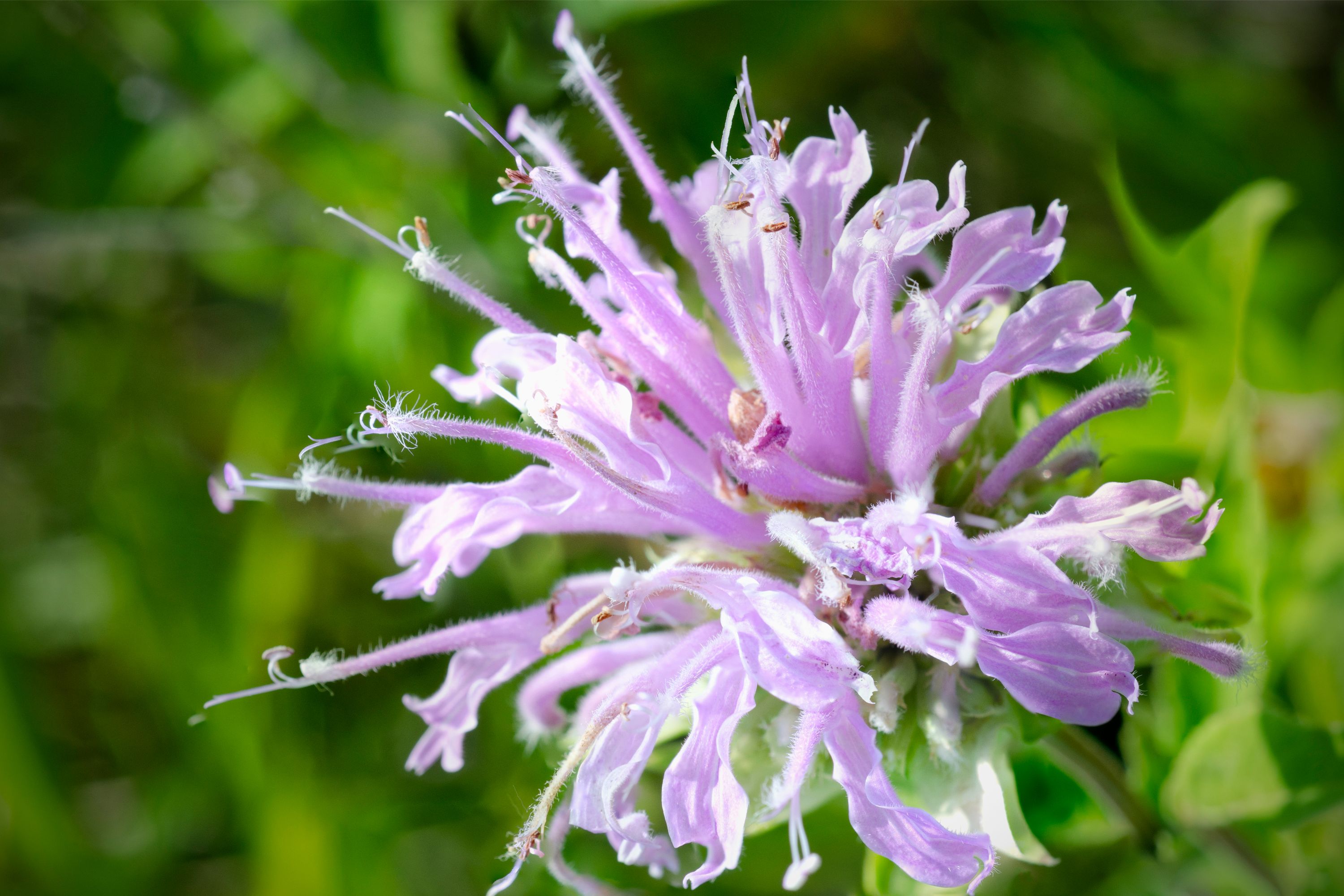Wild bergamot
(Monarda fistulosa)

Description
Monarda fistulosa, commonly known as wild bergamot or bee balm, is a flowering herbaceous plant native to North America. This plant is a member of the mint family, Lamiaceae, and is known for its striking, vibrant purple blooms and its ability to attract pollinators, particularly bees and butterflies. Taxonomy and Nomenclature Monarda fistulosa was first described by the Swedish botanist Carl Linnaeus in his 1753 work Species Plantarum. The species name fistulosa comes from the Latin word for "hollow" or "tube-like," referring to the shape of the plant's stem. Distribution and Habitat Wild bergamot is found throughout much of North America, from the eastern United States to the Rocky Mountains and western Canada. It is commonly found in open woods, meadows, and prairies, and is often seen growing in large, dense stands. Physical Characteristics Wild bergamot typically grows to be between 2 and 4 feet tall, with a spread of about 2 feet. The plant has square stems that are hairy and slightly purple, and its leaves are also hairy and range from light green to dark green in color. The leaves are long and narrow, with a toothed edge, and are arranged opposite each other on the stem. The flowers of wild bergamot are the plant's most distinctive feature. They are arranged in dense, spherical clusters at the tops of the stems, and are made up of tubular, two-lipped flowers that are typically purple or lavender in color. The flowers bloom from mid-summer to early fall and are highly attractive to bees, butterflies, and other pollinators. Cultivation and Uses Wild bergamot is a popular ornamental plant, particularly in native plant gardens and prairie restoration projects. It is relatively easy to grow and prefers full sun to partial shade and moist, well-drained soil. The plant can be propagated by seeds, cuttings, or division. In addition to its ornamental value, wild bergamot has a number of medicinal and culinary uses. The plant's leaves and flowers have a minty, citrusy flavor and can be used to make a tea or added to salads and other dishes. The plant has also been used traditionally by Native American tribes to treat a variety of ailments, including colds, sore throats, and gastrointestinal issues. Ecological Importance Wild bergamot is an important plant for pollinators, particularly bees and butterflies. The nectar and pollen of the plant attract a wide range of pollinators, and the dense stands of wild bergamot provide important habitat for these species. The plant is also used as a host plant by the larvae of some butterfly species, including the common buckeye and the white-lined sphinx. Threats and Conservation While wild bergamot is not currently considered a threatened or endangered species, it is threatened by habitat loss and fragmentation, as well as by the spread of invasive species. In addition, the plant's popularity as an ornamental plant has led to overharvesting in some areas. To ensure the continued health and vitality of wild bergamot populations, it is important to protect and restore its native habitat and to promote responsible cultivation practices.
Taxonomic tree:







